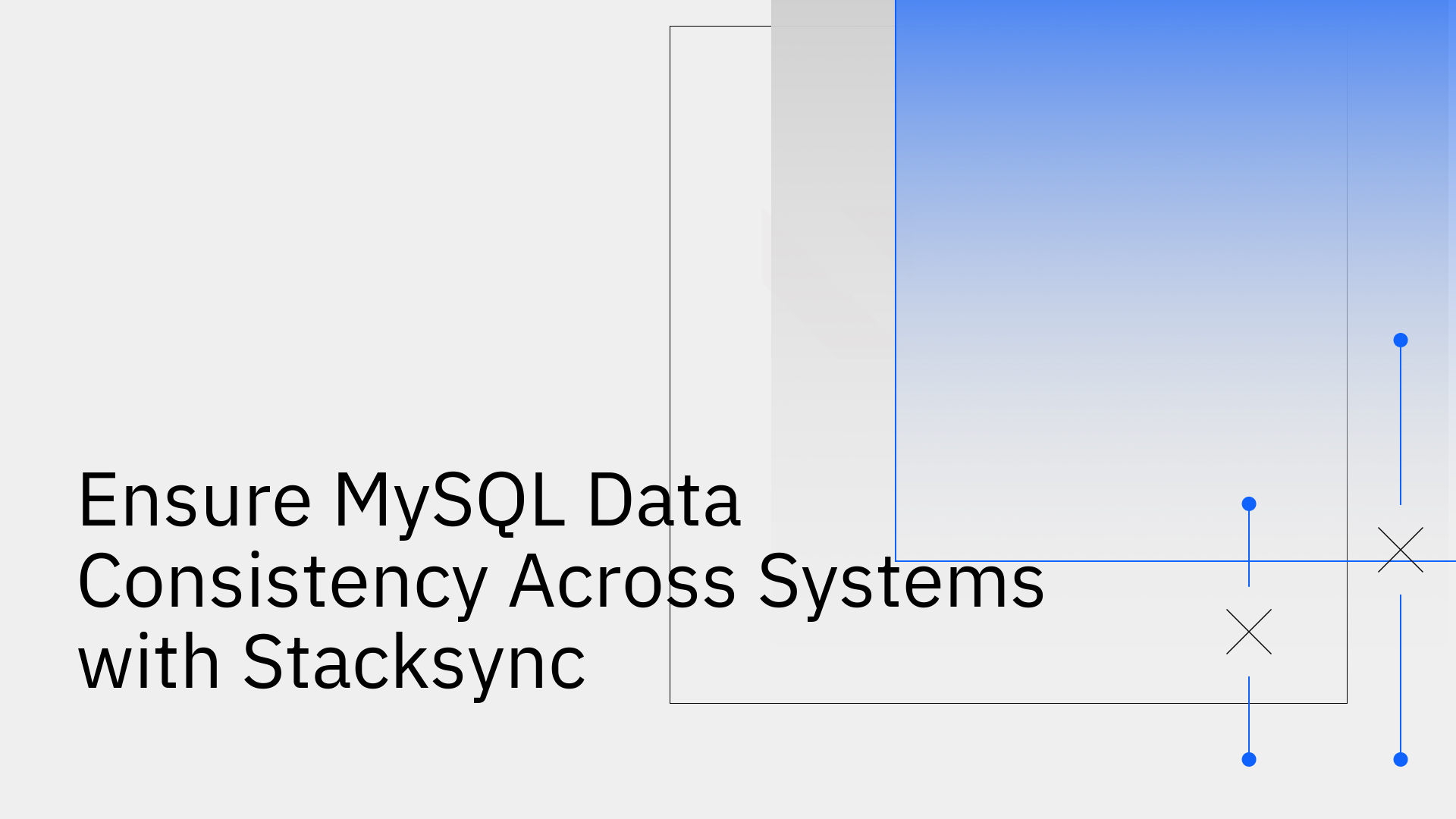
Maintaining data consistency is a critical, non-negotiable challenge for any business that relies on MySQL for core operations. When your MySQL database is siloed from other essential business systems like your CRM, ERP, or other databases it inevitably leads to data discrepancies. These inconsistencies create a ripple effect of negative impacts, from flawed analytics and poor strategic decisions to operational errors and damaged customer relationships.
The solution isn't another complex, custom-coded script or a slow batch process. It's a modern approach designed for today's data ecosystem. Stacksync is a data synchronization and workflow automation platform built to ensure real-time MySQL data consistency across systems, creating a single, reliable source of truth for your entire organization.
Data consistency refers to the uniformity, accuracy, and reliability of data as it moves across different systems [5]. When data drifts, it loses its integrity and value.
Data in your MySQL database can quickly become out of sync with other applications for several common reasons:
The consequences of data inconsistency extend far beyond the database, affecting every part of the business:
While several methods exist to move data, traditional approaches were not designed for the complexity and real-time needs of modern businesses.
Native MySQL replication methods, such as master-slave or Group Replication, are powerful tools for ensuring high availability and creating disaster recovery backups [1]. Their primary purpose is to copy data between MySQL instances.
However, they fall short when it comes to ensuring data consistency across a heterogeneous tech stack. These tools are not designed to connect MySQL with systems like Salesforce, NetSuite, or other SaaS platforms. Furthermore, even in MySQL-to-MySQL setups, they can introduce transaction inconsistencies, such as gaps in the transaction sequence on multithreaded replicas or half-applied transactions [3]. While MySQL Group Replication provides certain consistency guarantees, they are scoped to the database group, not external applications [4].
Traditional Change Data Capture (CDC) and ETL tools present their own set of problems. Implementing open-source CDC tools often requires extensive infrastructure—like managing Kafka clusters—and deep DevOps expertise. This approach introduces significant operational overhead and a high risk of silent data corruption if events are missed or fail in the processing queue. It's a heavy lift that diverts engineering resources from core product development. A more modern approach to real-time database replication bypasses these infrastructure hurdles.
Stacksync was engineered to solve the core problem of operational data consistency, overcoming the limitations of both native replication and traditional ETL/CDC. It provides a real-time, bidirectional synchronization layer between MySQL and over 200 other business-critical systems, all without writing code or managing complex infrastructure.
Stacksync is more than just a data pipe; it's a complete solution for maintaining data integrity.
Getting started with Stacksync is a straightforward, no-code process designed for speed and security.
Our entire platform is built with a security-first design. Integrations are non-invasive and do not require any modifications to your underlying MySQL database schema. Stacksync is compliant with enterprise-grade security standards, including SOC 2 Type II, GDPR, and HIPAA, so you can sync data with confidence.
Achieving MySQL data consistency across systems is no longer a complex engineering puzzle. While traditional tools create more problems than they solve, Stacksync offers a powerful, scalable, and easy-to-use solution for real-time, two-way synchronization.
It's time to move beyond unreliable batch jobs and brittle custom scripts. Unify your data ecosystem and empower your teams with consistent, accurate data.
Explore our real-time data synchronization best practices and start your free trial or book a demo to see Stacksync in action.